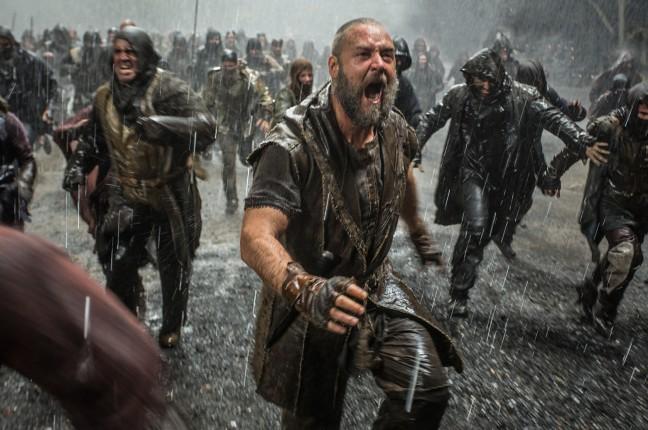Religion remains one of the most divisive topics in any culture, but the one thing that many people can agree on is that the stories passed through the years remain epic and awe-inspiring. Whether the tales are of morality or even just of the sheer power of a larger figure, world religions often play a large part in our lives and have true staying power. Though you may not be knowledgeable in world religions or the stories that accompany these customs and traditions, they are ingrained in the culture around us and are inescapable. Whether it’s through reference, satire or your own personal belief system, these stories touch us, often in our darkest times.
It’s this sentimentality and belief that makes movie studios see dollar signs and oftentimes make adaptations of religious stories for the big screen. Some of the biggest and most beloved screen classics have been Biblical adaptations from classic stories or events. Carl Dreyer’s “The Passion of Joan of Arc” traces the story of the martyr Joan of Arc, through her time leading an army against the English and her eventual demise. The beauty of silent film and her poetic death was the first instance of a film portraying the religious and the beauteous at once. It stands the test of time as a film classic and as a testament to the power of black and white filmmaking. Several other adaptations were produced, on a grander scale, including Cecil B. DeMille’s “The Ten Commandments.” These two stories, already retold through countless generations, are very highly adapted, even recently.
Larger, more melodramatic films diluted the market throughout the ’50s and ’60s, and we have turned back to this gimmick recently. With the release of Mel Gibson’s “The Passion of the Christ,” religious films have turned more to realism and less to the drama and action of the past. This year is especially full of adaptations of Biblical stories. Darren Aronofsky has directed a film featuring a very futuristic and action-packed adaptation of the story of Noah’s Ark, called “Noah,” featuring a bearded Russell Crowe as the titular character. Also coming into theaters this year is a Ridley Scott-helmed adaption called “Exodus” featuring Christian Bale as Moses. While “Noah” seems to promise intrigue and cataclysmic results, “Exodus” looks more like the historical epics that Charlton Heston dominated more than 50 years ago. Also coming out this year is a Spanish-language depiction of the life of Jesus of Nazareth, entitled “Son of God,” which seems to focus more on the love and hospitality of his life than the terrors of his death.
While Biblical stories are still being shown in either realistic or moral approaches, Greek mythology has been boiled down to mundane action films, a trend which started with “Clash of the Titans” back in the ’80s. While that film was adapted for the new millennium and given a sequel, the trend it kick-started has become commonplace in the theater this year. Even more of a trend is the use of the demigod Hercules as inspiration. Not one but two films featuring the son of Zeus are hitting theaters, one simply called “Hercules,” starring Dwayne “The Rock” Johnson, and another coming out this week called “The Legend of Hercules,” starring Kellan Lutz. Both films reject realism or historical accuracy and instead focus on action and bloodshed. Even more pivotal in that regard is the highly anticipated sequel “300: There and Back Again,” which deals with the battle for Sparta.
Recently, a trend in documentary filmmaking has been to turn to the religious masses in this country to dissect the beliefs and fervor. The critically-lauded “Jesus Camp” is a 2006 documentary that details the indoctrination of children and how effectual it is in keeping hysteria alive. Bill Maher’s “Religulous” deals with atheism and non-believers who find religion destructive. More contemporary and less driven by the state of Christianity is the film “Kumare.” A filmmaker, sick of listening to the diatribes of gurus in India and finding their methods and deceit wanting, pretends to be an Indian yogi and gains a following. While the film does not speak ill of organized religion, it stays in the same vein as other documentaries of its kind, seeking truth for those who follow blindly.
While it may seem uncouth for these new adaptations to take religion and warp it to create a new kind of story, these films have been a long time coming. Last year’s fairy tale adaptations were a popular trend because the often-told stories needed a fresh perspective and added drama. So here comes the year of the religious film trend, which has adapted the dusty old stories of the Biblical canon and shown them to fresh, young eyes. Changing the story to be bolder and more adult only shows a new generation the guts and glory of what made these tales famous in the first place.














